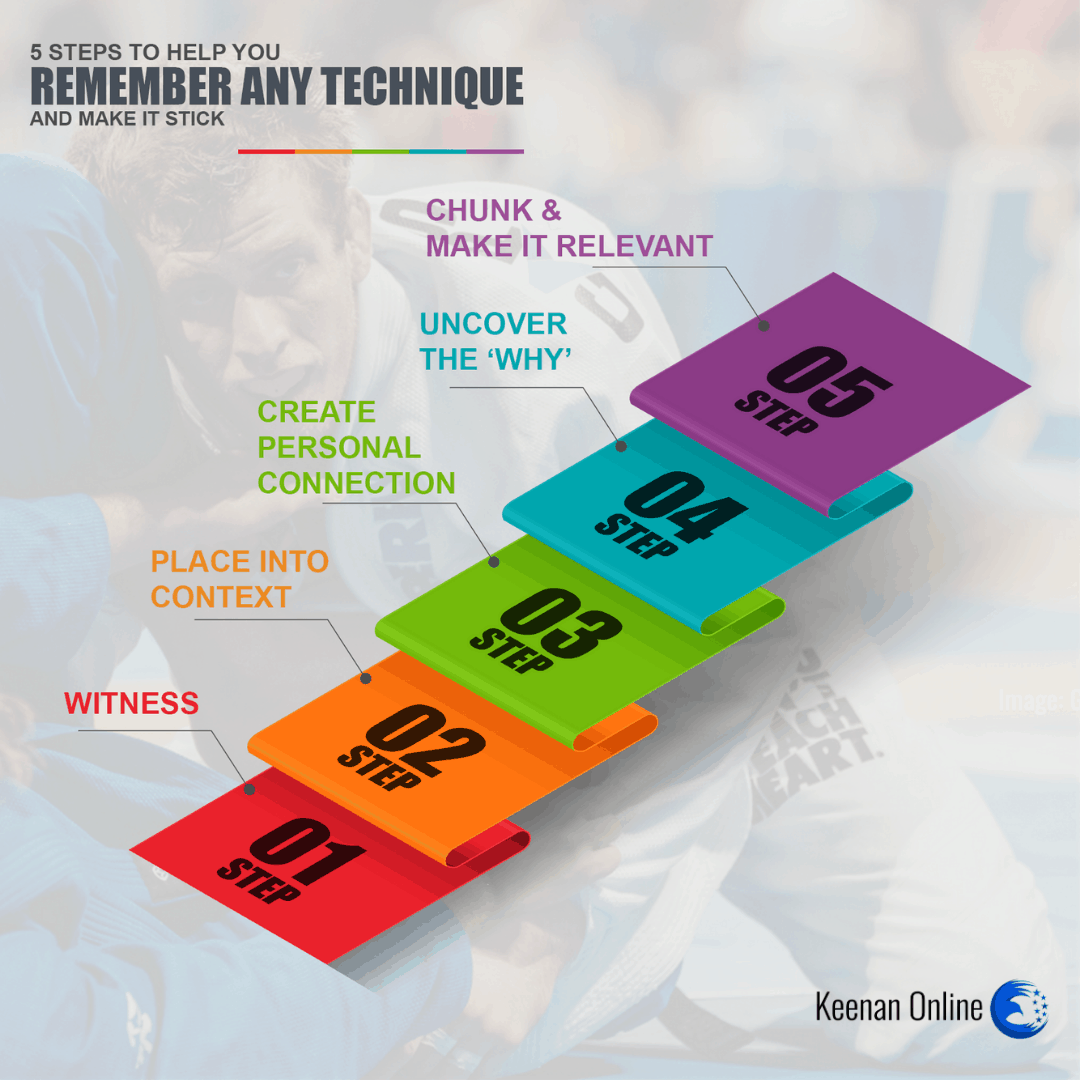
Struggling to remember new techniques?
You’re not alone.
If you’re a veteran of jiu jitsu, it’s safe to say you’ve forgotten more techniques than you know…
… and if you’re new to jiu jitsu, be prepared to do the same.
There are so many techniques and entries that it’s impossible to remember them all – let alone master them.
So, does this mean all is lost?
Are you destined to swim through an ocean of technique for the rest of your life hoping that one or two will stick to you like seaweed in the surf?
No, you’re not and I’ll tell you why…
Today, I’m going to introduce you to a simple 5 step method you can apply to your training right now to help you not only remember new techniques…
… but make them stick!
WHY YOU NEED THESE 5 STEPS
Professor of Education at the West Chester University of Pennsylvania, Kevin Flanigan (Ph.D.) presented these 5 principles in his courses on vocabulary.
While vocabulary and jiu jitsu are clearly two different things, Professor Flanigan’s 5 step process translates well when applied to the learning and remembering of new techniques in jiu jitsu (as we will see later).
In a perfect world, we would simply see or hear something new and immediately retain all the information about that new thing to a level short of mastery.
Kind of like an on or off mechanism akin to a light switch, where one was once ignorant, shrouded by an absence of light, is now illuminated with wisdom.
However, we don’t live in a perfect world, do we? (at least I don’t) And instantaneous wisdom is not something we as humans can often benefit from.
According to Professor Flanigan, to effectively remember and learn a new word (or in our case a jiu jitsu technique) we need to progressively increase our exposure to the word (or technique) from a variety of different angles.
So, instead of a run of the mill on and off light switch, we’re going to approach our learning using the analogy of a dimmer switch: gradually increasing the intensity of light exposure to full-blown illuminated wisdom.
I want you to think of each of the 5 steps to come as an incremental increase of light exposure…
… the more we progress through the steps the brighter your light (wisdom and retention) will be.
Ok, that’s enough of the why…
… let’s get to the how.
5 STEPS TO HELP YOU REMEMBER ANY JIU JITSU TECHNIQUE
1. WITNESS THE TECHNIQUE
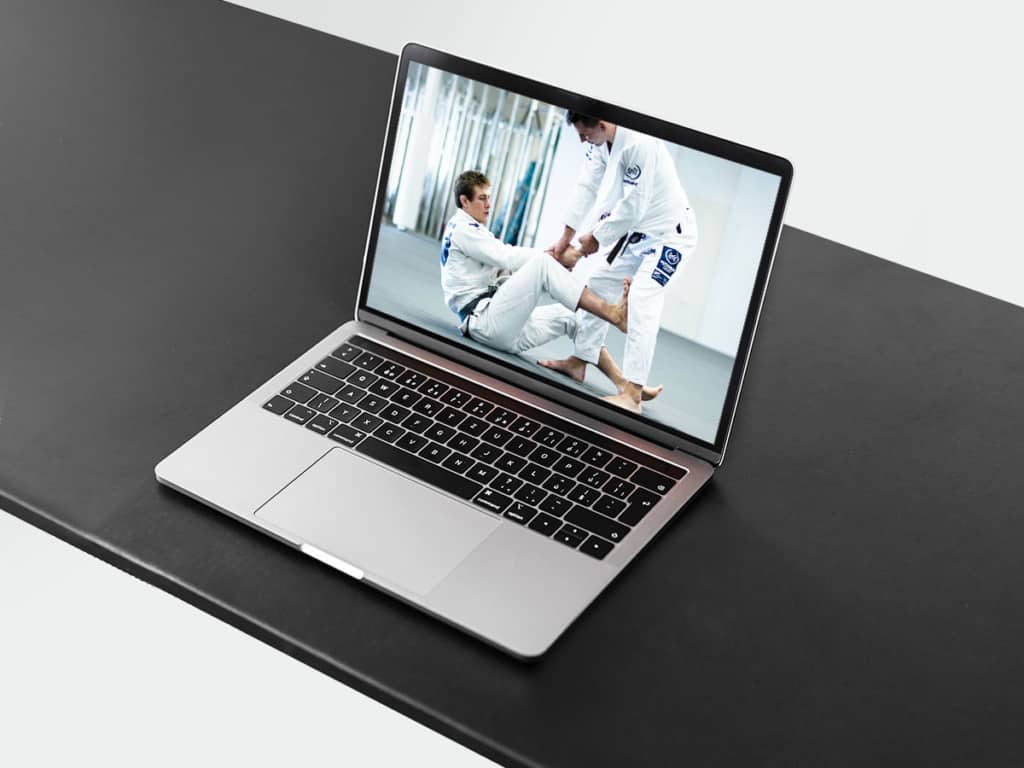
The first step in our 5 step process is gaining exposure to the technique.
This should be an obvious step, as to learn any technique we need to first – see it.
Exposure can come in many forms including learning a technique in class, a private lesson, seeing it in action on the mat or watching it in an instructional like the Lapel Encyclopedia or Keenan Online.
This is the most fundamental step and also the easiest, so we won’t spend any more time talking about it here.
2. PLACE THE TECHNIQUE INTO CONTEXT
After initially learning the technique, and hopefully drilling it, it’s now time to put it into context.
In the case of vocabulary, as taught by Professor Flanigan, placing the word into context would involve forming a sentence with that word.
This provides utility and practice with the word in everyday conversation.
In jiu jitsu, this involves going one step further from drilling to pinpointing exactly where in the chain of events this technique would serve as a beneficial link…
… essentially, working out how to form a jiu jitsu sentence using your new technique.
That is which specific situation is the best for applying this new technique.
Let’s take a look at an example…
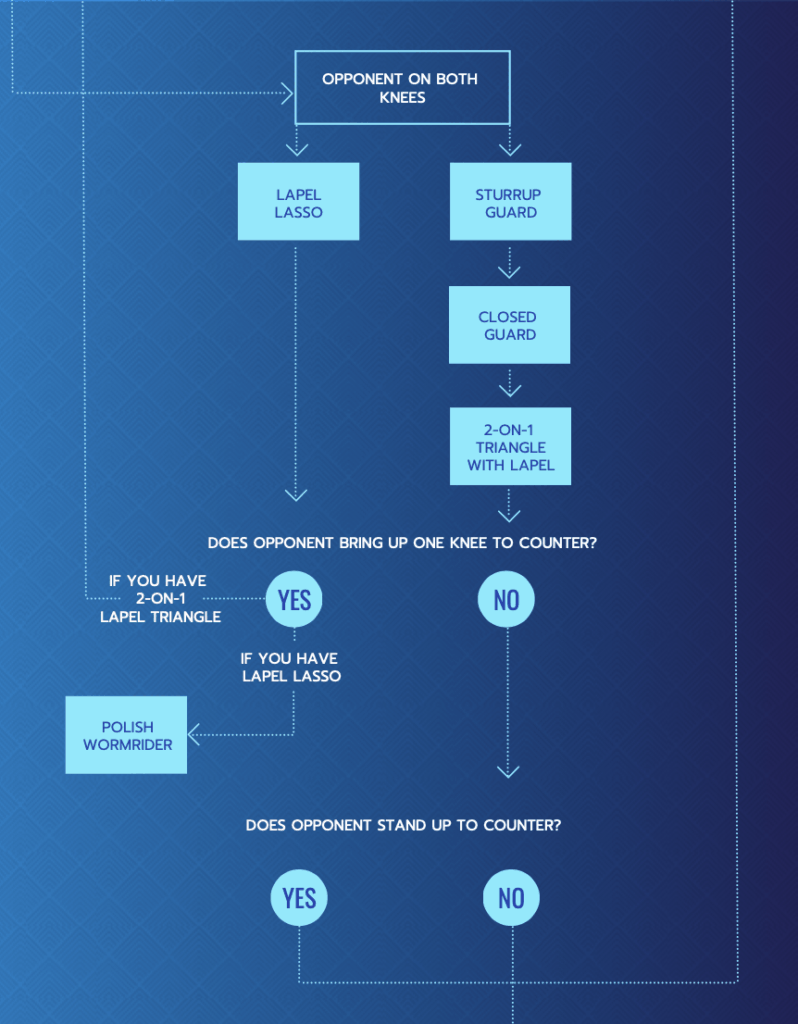
Now, you don’t have to go to the effort of creating a flow chart like the one above. But, you do need to take some time to think where you would apply this technique to get the most value from it.
Ask yourself, which technique could come before it, and…
If it’s not a submission – which technique could come after it, or…If it is a submission – which technique could come after it if things went wrong.
Note – If you’re looking to put worm guard techniques into context, but don’t have the time, it’s ok because we’ve done it for you. Download our FREE Worm Guard Field Guide and learn the exact moves you should be doing against your opponent’s specific defenses to your Worm Guard — taking the stress of problem-solving, in the moment, off your hands so you can focus on getting those quick wins on the mat.
[activecampaign form=1]
3. MAKE A PERSONAL CONNECTION
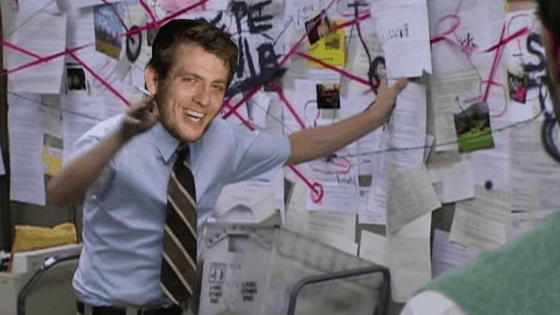
Ok, so now that you’ve seen the technique, drilled it, placed it into context, it’s now time to create a personal connection with it.
One of the best ways to master something is to ensure you have an interest in it.
Whether it be a personal affinity or a solution to a particular problem you’re currently plagued by on the mats.
I want you to think about your specific situation. How can you use this technique not just as a new “thing” to play with in your game…
… but as a way to bring value to your game and bridge any possible gaps you may have.
Making this personal connection also forces you to visualize the technique, specifically, you performing the technique and the problem it can potentially solve: providing you with an extra level of retention via psychoneuromuscular theory.
Psychoneuromuscular theory states that visualizing a skill, or intended action, can have similar effects in the brain as physically performing the skill or act itself.
After all…
… the body cannot go where the mind has not gone first.
4. UNCOVER THE ‘WHY’ BEHIND THE TECHNIQUE
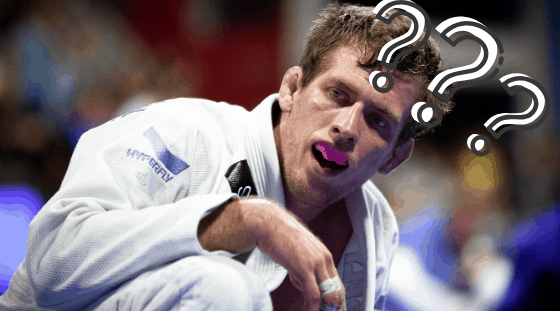
Quick question…
Are you human?
(I hope you are) Because, as humans, we are hard-wired to retain and connect with information more effectively when it is presented to us in story form.
Yes, this is true and it is a psychological phenomenon manipulated by Hollywood and marketing teams around the world…
… and I should know, I work in marketing.
What this means is, to make a deeper connection and build on our last step, turning the dimmer switch of jiu jitsu technique ever so brighter, it would be wise to discover the reason why the technique you want to learn came into existence.
In short, what scenario or need lead to it’s creation.
Now, I understand that this isn’t always possible in class, especially if your instructor shows up with a fresh batch of new YouTube techniques to teach.
But these days, thanks to the wonder of the internet, finding a video from the Mother or Father of a technique is possible and usually, when introducing a new technique to the world, the Mother or Father will begin the video by stating what lead them to create it.
If you’ve seen a training partner or instructor in your gym consistently use a technique with great success, pick their brain. Ask them, why it is they started doing that technique.
Whether it be a result of getting their guard smashed, being taken down the same way too often, or being submitted to a point they couldn’t take it anymore, finding out their story will help you retain that technique much better than you ever could without it.
5. CHUNK AND MAKE IT RELEVANT
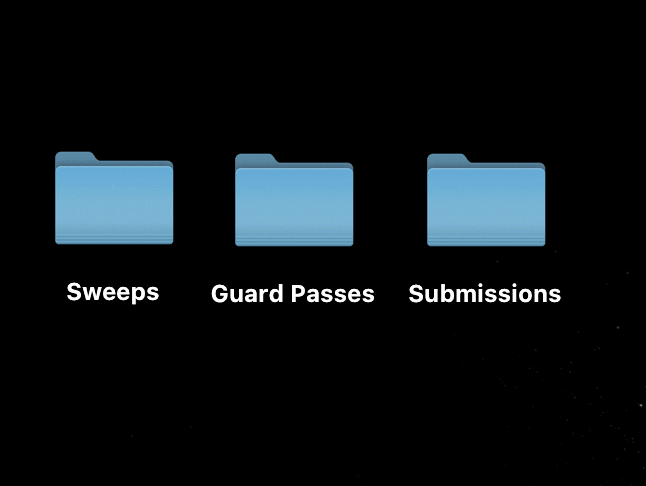
You may be tempted to try and take on all the lessons the jiu jitsu world can throw at you.
But often, this doesn’t provide as much value as you’d hope.
Don’t naively put your mouth on the proverbial fire hose of technique.
Think about that analogy, as goofy as it sounds, for a second…
… if you really put your mouth to the end of a fire hose and turn it on, how much water do you actually think you’d be able to drink?
And how much would fall on to the floor?
Now, exchange water with jiu jitsu technique and you’ll get the same result.
Rather than take on any and all technique from random areas of the game, you’re better off focusing on what’s relevant to you and what you need to improve on right now.
Don’t go out and learn a back take and a guillotine escape one day, then a foot lock and the macarena the next.
Make it relevant to you by selecting and chunking techniques appropriate to where you are in your game right now.
For example, if your goal is to improve your guard, focus on learning guard retention, sweeps, triangles, etc, within a select period of time and reserve your efforts for developing other areas of your game when the time comes to turn your focus towards them.
This idea of chunking relevant concepts is what’s known in cognitive science circles as schema theory.
Think of your brain as either two things…
… a computer desktop screen filled with 100 random files including photos, music, and documents.
Or
… a computer desktop with 3 folders labeled photos, music, and documents all containing the files you need, that you know can be easily located when you need them the most.
Which do you think you would prefer?
(Headsup: it’s the second one, for sure!)
SUMMING IT UP
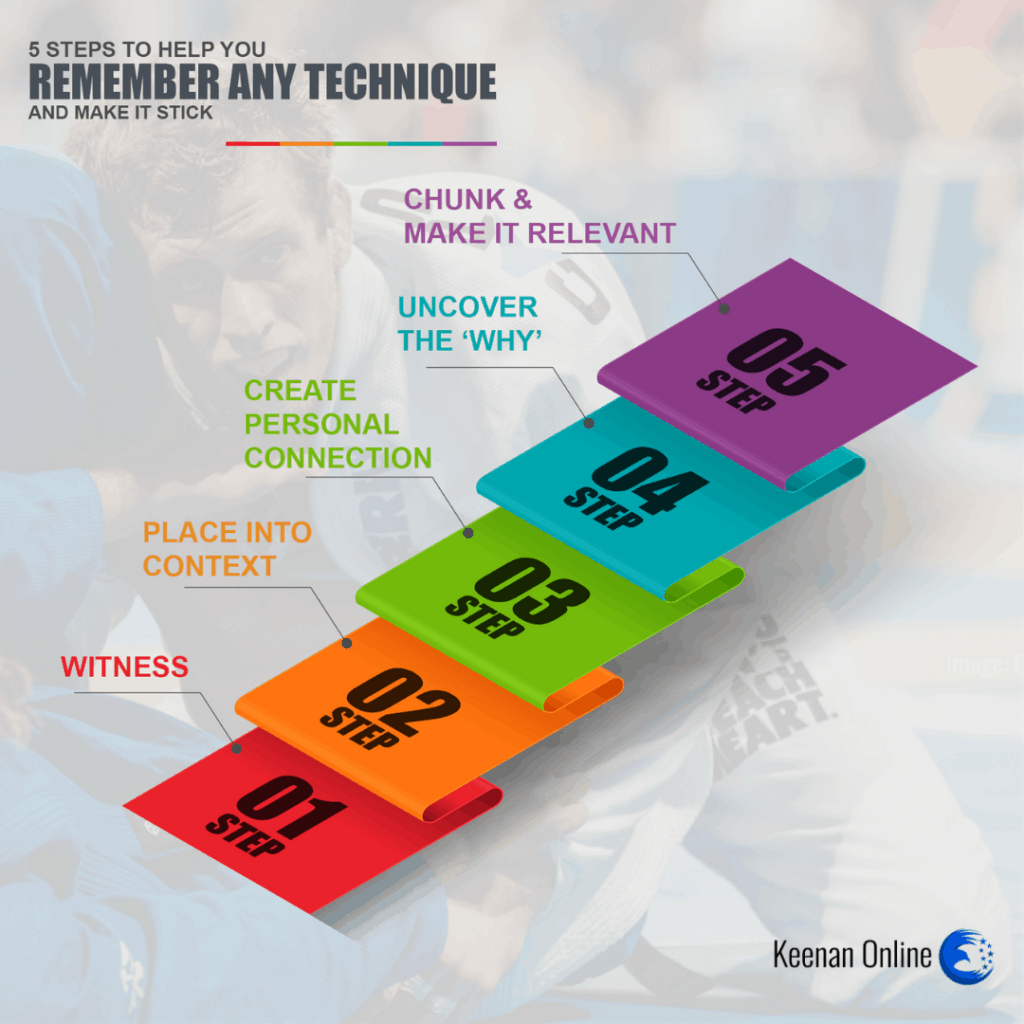
So, the next time you see a technique that you want to adopt, and you know it will really benefit you in your game, all you have to do is…
- Witness the technique
- Put it into context
- Make a personal connection with it
- Discover the why behind the technique
- Chunk & make it relevant
There you have it, 5 simple steps to help you remember any jiu jitsu technique and make them stick to your game.
Note – If you’re looking to put worm guard techniques into context, but don’t have the time, it’s ok because we’ve done it for you. Download our FREE Worm Guard Field Guide and learn the exact moves you should be doing against your opponent’s specific defenses to your Worm Guard — taking the stress of problem-solving, in the moment, off your hands so you can focus on getting those quick wins on the mat.
[activecampaign form=1]
